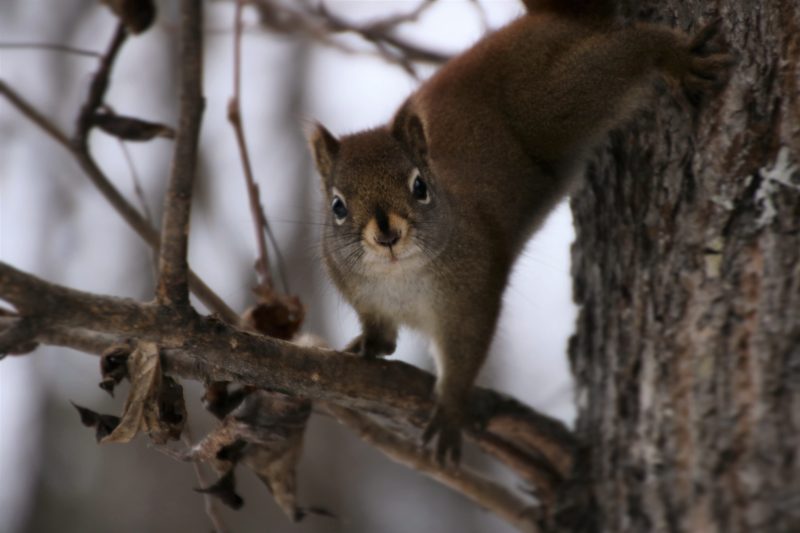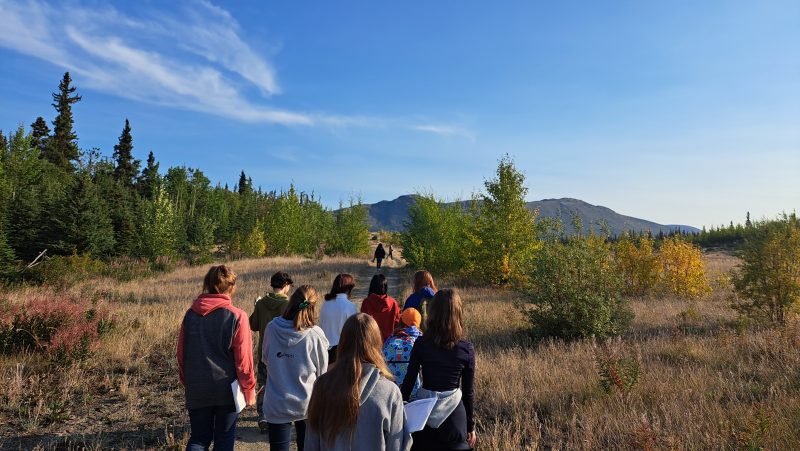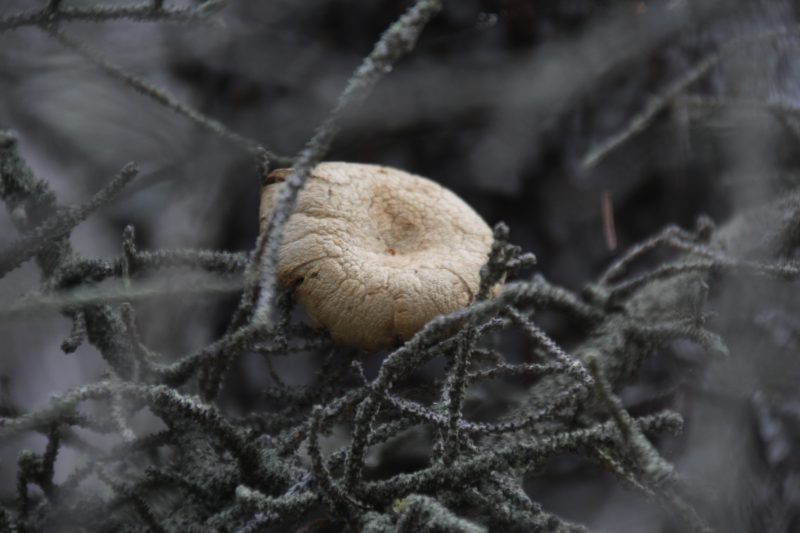S3 – Students, Squirrels, and Science!
Categories:
Blog and photos by Natasha, Community Liaison Officer – North Coast Skeena Region
The air was warm on Tuesday morning as we slowly walked the forested trail, stopping every few steps to make notes on our data collection sheets. We placed a check mark for each squirrel seen, a squirrel vocalization heard, or the many food remnants scattered about – middens, pinecone piles, and mushrooms drying in trees. The squirrels, it seemed, were extra active this year stockpiling for the long winter that lies ahead.
For the last five years the wonderful teachers and students of Atlin School have welcomed me (and my colleagues for the first two years) into their space. Over the years we have collected important data on red squirrels, following the BC Parks’ Long Term Ecological Monitoring (LTEM) protocol. The LTEM program was set up approximately 10 years ago to highlight changes occurring across a number of ecosystems – forests (squirrels and soapberries), intertidal zones, wetlands, grasslands, and the alpine.
These dedicated students have joined BC Parks staff every year to conduct real-world science and gather data to better understand red squirrel population dynamics. The squirrel protocol requires the data collectors to walk four, 300-metre transects for three mornings in a row between mid-June/mid-July or end of August through September and document what they see and hear. As squirrels spread seeds around and are prey for larger predators, this protocol highlights how the abundance of squirrels is a proxy for seed availability and forest health. If the squirrel population declines over the long term, this is a signal of significant changes in the forest that may have cascading impacts to higher trophic levels.
Over the years we have noticed many changes, such as significant weather shifts, habitat disturbances, and less food being available. This year for example, very few mushrooms were found. With the extreme drought across the province there were fewer mushrooms growing around Atlin, and only five were found drying in trees this year as opposed to the 20+ mushrooms we counted last year on one transect. After each morning walk, the students and I would discuss what we found and why that may be happening. Why were the squirrels so much louder today? Was it cooler, wetter, or warmer than yesterday? Who noticed more mushrooms growing today than the first day?
Deepening our awareness of the forested area and the subtle changes occurring each day was profound. Over the three days (and over the years) the students have become better observers. They not only know what to look for and where (mushrooms seem to be rarely put at eye level), but they are also looking deeper, noticing squirrel tracks in the mud, and regularly used trails known as squirrel highways (they taught me that!).
I am so proud of the Atlin students for taking on this yearly task and thank them greatly for their participation. I hope that collecting data, exploring the integral role squirrels play in the forest, and reflecting on their connection to nature will highlight how neat nature can be and how everyone can play a role in citizen science!







